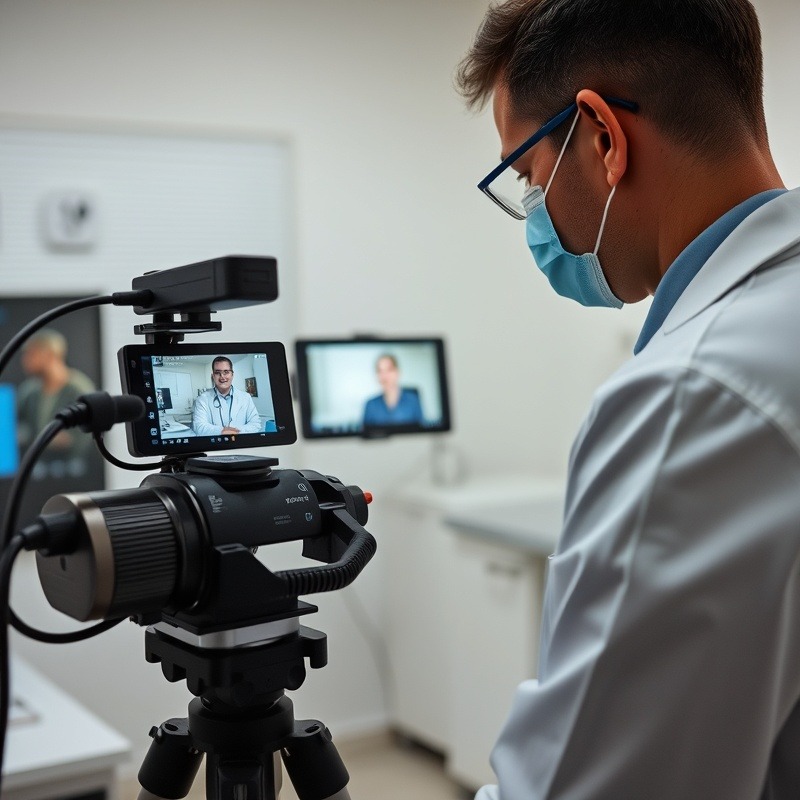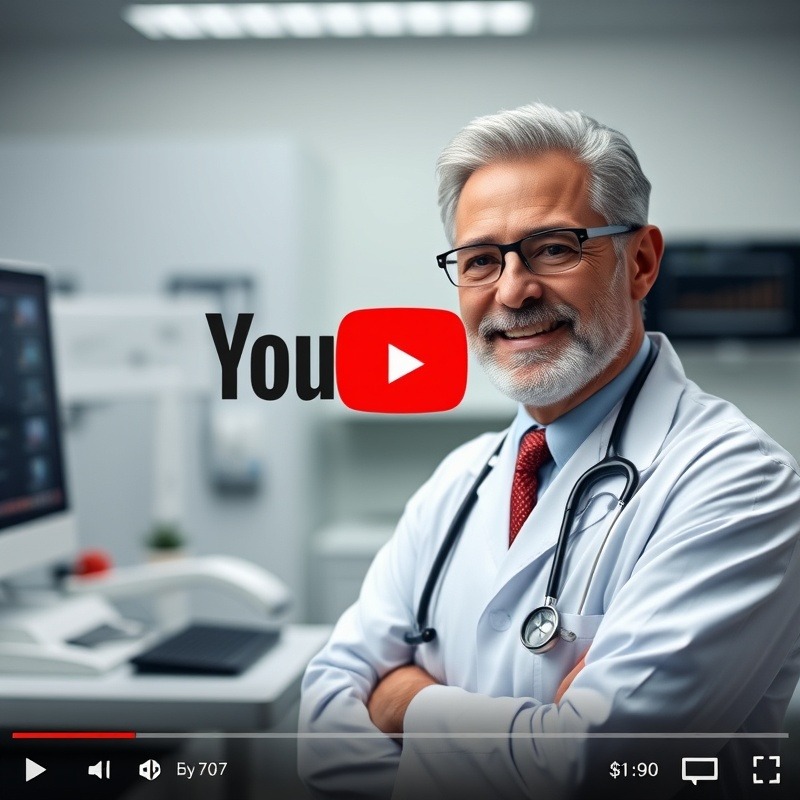In the fast-evolving landscape of healthcare, perception is paramount. Healthcare professionals rely on their reputation to attract patients, secure partnerships, and build credibility. Video content has emerged as a game-changer in transforming the image of healthcare professionals. With its visual appeal and storytelling capabilities, video content allows healthcare professionals to connect with their audience on a deeper level. It humanizes their brand and showcases their expertise in a compelling and engaging way. Through videos, doctors, nurses, and other healthcare professionals can share success stories, provide educational content, and address common concerns, all while establishing themselves as trusted authorities in their field.
By leveraging video content, healthcare professionals can boost their brand perception and differentiate themselves in a crowded market. Patients are more likely to choose healthcare providers with a strong online presence and authentic video content that resonates with their needs and values. In this article, we'll explore how video content is revolutionizing the healthcare industry, attracting and engaging patients, and enhancing the image of healthcare professionals.

The Impact of Video Content on Brand Perception
Video content has a profound impact on brand perception in the healthcare industry. It allows healthcare professionals to showcase their expertise, build trust, and establish themselves as thought leaders. Unlike text-based content, videos engage multiple senses, making them more memorable and impactful.
One way video content boosts brand perception is by humanizing healthcare professionals. By featuring doctors, nurses, and other healthcare providers in videos, patients can see the faces behind the medical expertise. This personal connection builds trust and helps patients feel more comfortable seeking healthcare services.
Moreover, video content enables healthcare professionals to tell their stories in a compelling and authentic way. Through storytelling, they can share success stories, highlight patient testimonials, and showcase their commitment to providing high-quality care.
Video content allows healthcare professionals to address common concerns and educate patients about various medical conditions and treatments. By sharing valuable information in an easily digestible format, healthcare professionals position themselves as trusted authorities, further enhancing their brand perception.
In summary, video content has a significant impact on brand perception in the healthcare industry. It humanizes healthcare professionals, allows for storytelling, and enables the provision of valuable educational content.

Benefits of Using Video Content in Healthcare Marketing
The use of video content in healthcare marketing offers numerous benefits for healthcare professionals and their brands. Let's explore some of the key advantages:
1. Increased Patient Engagement
Video content captures attention and keeps viewers engaged. It allows healthcare professionals to convey information in a visually appealing and interactive manner, leading to higher viewer retention and increased patient engagement.
Consistently producing high-quality videos helps healthcare professionals build brand recognition and establish themselves as industry leaders. By creating unique and memorable video content, healthcare professionals can differentiate themselves from competitors and increase brand awareness.
3. Enhanced Patient Education
Video content is an effective tool for patient education. It allows healthcare professionals to explain complex medical concepts, procedures, and treatments in a way that is easy to understand. By providing educational videos, healthcare professionals empower patients to make informed decisions about their healthcare.
4. Increased Website Traffic and SEO
Video content is highly shareable and has the potential to go viral. When healthcare professionals produce engaging videos that resonate with their target audience, they are more likely to be shared on social media platforms, leading to increased website traffic. Additionally, incorporating video content into websites improves search engine optimization (SEO) and increases organic traffic.
5. Improved Patient Trust and Loyalty
Watching healthcare professionals in videos creates a sense of trust and familiarity. Patients feel more connected to healthcare professionals who share their expertise and experiences through video content. This trust and connection foster patient loyalty and increase the likelihood of repeat visits and referrals.
The benefits of using video content in healthcare marketing are numerous and impactful. It increases patient engagement, improves brand recognition, enhances patient education, drives website traffic, and fosters patient trust and loyalty.

Video Content Trends in the Healthcare Industry
The healthcare industry is experiencing a surge in video content production, driven by changing consumer preferences and advancements in technology. Let's explore some of the key video content trends in the healthcare industry:
1. Live Streaming
Live streaming has gained popularity in the healthcare industry, allowing healthcare professionals to interact with their audience in real-time. Live Q&A sessions, webinars, and virtual consultations are just a few examples of how healthcare professionals are leveraging live streaming to engage with patients and provide valuable information.
2. Patient Testimonials
Patient testimonials have always been a powerful marketing tool in the healthcare industry. Video testimonials take it a step further by allowing patients to share their experiences and outcomes in a more authentic and compelling way. These videos help build trust and credibility among potential patients.
3. Virtual Reality (VR) and Augmented Reality (AR)
Virtual reality and augmented reality technologies are revolutionizing patient education and training in the healthcare industry. Healthcare professionals can use VR and AR to simulate medical procedures, educate patients about their conditions, and train medical students in a realistic and immersive environment.
4. Behind-The-Scenes Footage
Behind-the-scenes videos provide a glimpse into the daily lives of healthcare professionals, showcasing the hard work and dedication that goes into providing quality care. These videos humanize the healthcare professional and create a deeper connection with the audience.
5. Interactive Videos
Interactive videos allow viewers to actively engage with the content, making the viewing experience more personalized and enjoyable. Healthcare professionals can use interactive videos to conduct virtual tours of their facilities, provide interactive quizzes, or offer personalized health assessments.
These video content trends demonstrate the industry's commitment to innovation and meeting the evolving needs of patients. By embracing these trends, healthcare professionals can stay ahead of the competition and deliver exceptional patient experiences.

Creating High-Quality and Engaging Healthcare Videos
Creating high-quality and engaging healthcare videos requires careful planning and execution. Here are some essential tips to consider:
1. Define Your Objectives
Before starting any video project, clearly define your objectives. Are you looking to educate patients, promote a specific service, or build brand awareness? Knowing your objectives will help you create focused and purposeful video content.
2. Know Your Audience
Understand your target audience and tailor your video content to their needs and preferences. Consider their demographics, interests, and pain points when planning the content and messaging of your videos.
3. Script and Storyboard
Plan your videos by creating a script and storyboard. This will help ensure a clear and concise message, as well as a well-structured video. A script will guide your narrative, while a storyboard will outline the visual elements of your video.
4. Invest in Equipment and Production Quality
While you don't need expensive equipment to create good-quality videos, investing in decent cameras, lighting, and audio equipment can significantly improve the production value. Good production quality enhances the professionalism and credibility of your videos.
5. Keep It Concise and Engaging
Attention spans are short, so keep your videos concise and engaging. Capture attention in the first few seconds and maintain interest throughout the video. Use visuals, animations, and storytelling techniques to make your videos captivating.
6. Incorporate a Call-To-Action
Every video should have a clear call-to-action (CTA) that directs viewers to take the desired next step. Whether it's visiting your website, booking an appointment, or subscribing to your newsletter, the CTA should be prominently displayed and easy to follow.
Remember, creating high-quality and engaging healthcare videos requires practice and experimentation. Continuously seek feedback from your audience and adapt your video content based on their preferences and feedback.

Tips for Optimizing Video Content for SEO
To maximize the reach and impact of your video content, it's essential to optimize it for search engines. Here are some tips for optimizing video content for SEO:
1. Keyword Research
Conduct keyword research to identify the relevant keywords and phrases that your target audience is searching for. Incorporate these keywords naturally into your video titles, descriptions, and tags.
2. Write Compelling Titles and Descriptions
Craft compelling titles and descriptions that accurately describe the content of your videos. Use keywords strategically in the titles and descriptions to improve search engine visibility.
3. Add Transcripts and Captions
Including transcripts and captions in your videos improves accessibility and SEO. Search engines can crawl and index the text, making your videos more discoverable. Additionally, transcripts and captions make your videos accessible to viewers with hearing impairments.
4. Optimize Video Metadata
Fill out the metadata fields when uploading your videos. Include relevant keywords, a concise description, and relevant tags. This metadata helps search engines understand the content of your videos and rank them accordingly.
5. Encourage Engagement and Sharing
Engaging videos that encourage viewers to like, comment, and share can improve SEO. The more engagement your videos receive, the higher they are likely to rank in search engine results.
6. Embed Videos on Your Website
Embedding your videos on your website improves SEO by increasing the time users spend on your site and reducing bounce rates. Optimize the video embeds by including relevant keywords in the surrounding text and metadata.
By following these SEO tips, you can increase the visibility and discoverability of your video content, driving more organic traffic to your website and enhancing your brand perception.
As video content continues to evolve, healthcare professionals must stay up to date with the latest trends and techniques. By creating high-quality and engaging videos, optimizing them for SEO, and leveraging the power of storytelling, healthcare professionals can boost their brand perception and stand out in a crowded market.
So, embrace the power of video content and take your brand perception to new heights in the world of healthcare.
 Add Row
Add Row  Add
Add 




Write A Comment